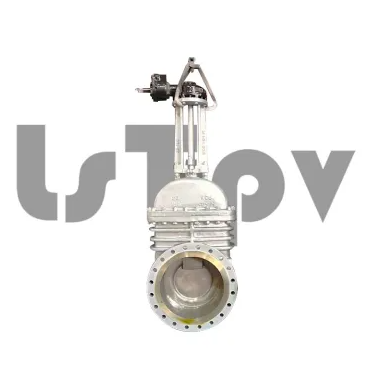What are the differences between expanding gate valves and other types of valves?
Introduction:
In the vast world of valves, there exists a diverse range of designs, each tailored to specific applications and requirements. One such type is the expanding gate valve, which stands apart from other valve variants due to its unique features and functionality. In this article, we will delve into the dissimilarities between expanding gate valves and other types of valves, shedding light on the benefits and drawbacks of each.
Understanding Expanding Gate Valves:
Expanding gate valves are primarily used in high-pressure and high-temperature applications, where they excel in providing tight shut-off capabilities and minimal leakage. Unlike other valves, the gate in an expanding gate valve expands against the seats, ensuring a tight seal when closed. This design feature allows for excellent sealing performance even in demanding environments.
Comparison with Globe Valves:
One of the most common valve types encountered in industrial settings is the globe valve. While globe valves are effective in controlling flow, they operate with a linear motion and rely on a disc or plug to regulate the flow path. In contrast, expanding gate valves function with a parallel gate that moves perpendicularly to the flow direction. This distinctive movement ensures a more unrestricted flow path, resulting in reduced pressure drop and increased flow capacity.
Contrasting with Ball Valves:
Ball valves are widely used due to their simple design and quick operation. They consist of a spherical closure element that rotates to control the flow. Expanding gate valves, on the other hand, provide superior sealing performance. The expanding gate creates a wedging effect against the seats, resulting in a robust seal, even in high-pressure scenarios. This characteristic makes expanding gate valves highly suitable for critical applications where leak-tightness is paramount.
Distinguishing from Butterfly Valves:
Butterfly valves are known for their compact size and cost-effectiveness. They consist of a disc that rotates about an axis to regulate flow. While butterfly valves offer significant advantages in terms of space and cost, they may not provide the same level of sealing performance as expanding gate valves. The expanding gate design ensures a complete closure, minimizing the chances of leakage and guaranteeing optimal flow control.
Differentiating from Plug Valves:
Plug valves are commonly used for on/off operations and have a cylindrical or tapered plug that controls the flow path. Expanding gate valves provide a distinct advantage over plug valves in terms of low torque requirements. The expanding gate design reduces friction between the gate and seats, resulting in smoother operation and reduced wear. This feature translates to lower actuation costs and enhanced longevity.
Unique Features and Advantages:
Expanding gate valves possess several unique features that set them apart from other valve types. These include:
a. Self-cleaning: The movement of the gate during operation helps to remove debris and contaminants from the sealing surfaces, ensuring long-term reliability and preventing clogging.
b. High-pressure capability: Expanding gate valves are specifically designed to withstand high pressures, making them ideal for applications in oil and gas, petrochemical, and power industries.
c. Bi-directional sealing: Expanding gate valves offer bi-directional sealing capabilities, enabling flow control in both directions. This versatility adds to their overall efficiency and effectiveness.
d. Minimal leakage: The expanding gate design provides a tight seal against the seats, resulting in minimal leakage and reducing the risk of environmental and safety hazards.
Conclusion:
When it comes to selecting the appropriate valve for a specific application, understanding the distinctions between valve types is crucial. Expanding gate valves stand out for their unique expanding gate design, providing superior sealing capabilities, reduced pressure drop, and increased flow capacity. While other valves offer their own advantages in terms of cost, compactness, or ease of operation, expanding gate valves excel in critical applications that demand reliable shut-off, minimal leakage, and high-pressure capabilities. Considerations such as system requirements, operating conditions, and budgetary constraints should guide the selection process to ensure optimal valve performance and operational efficiency.


Comments